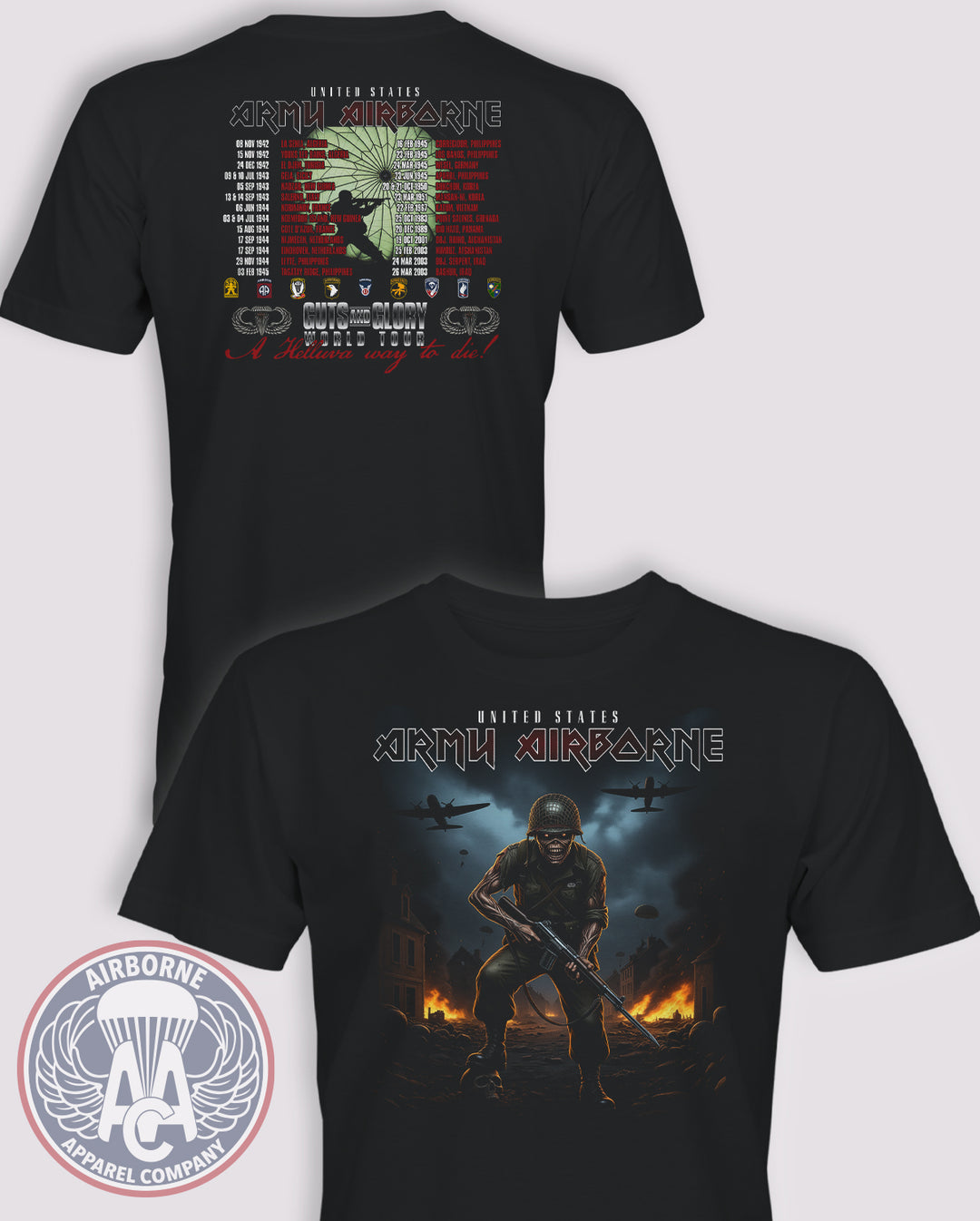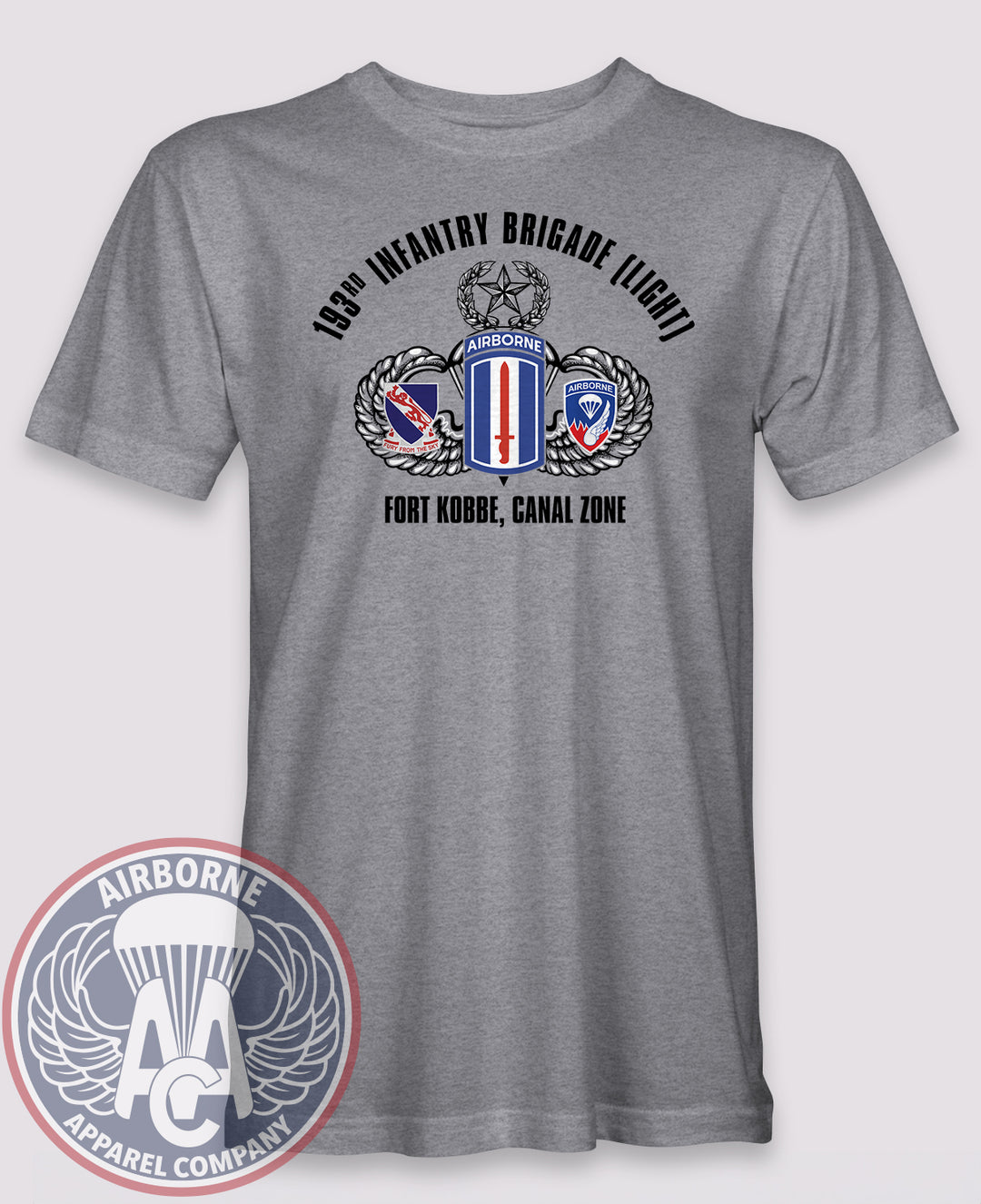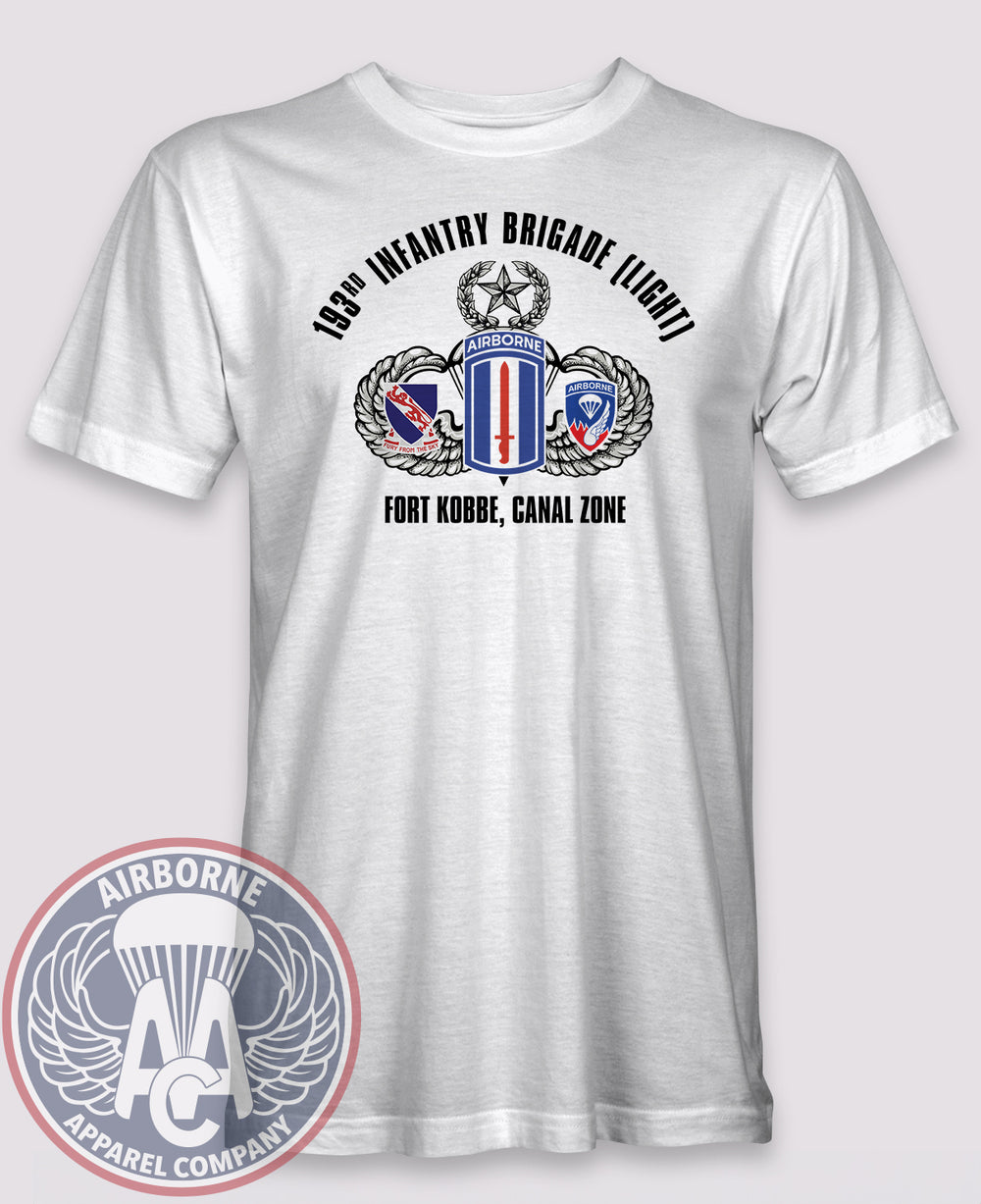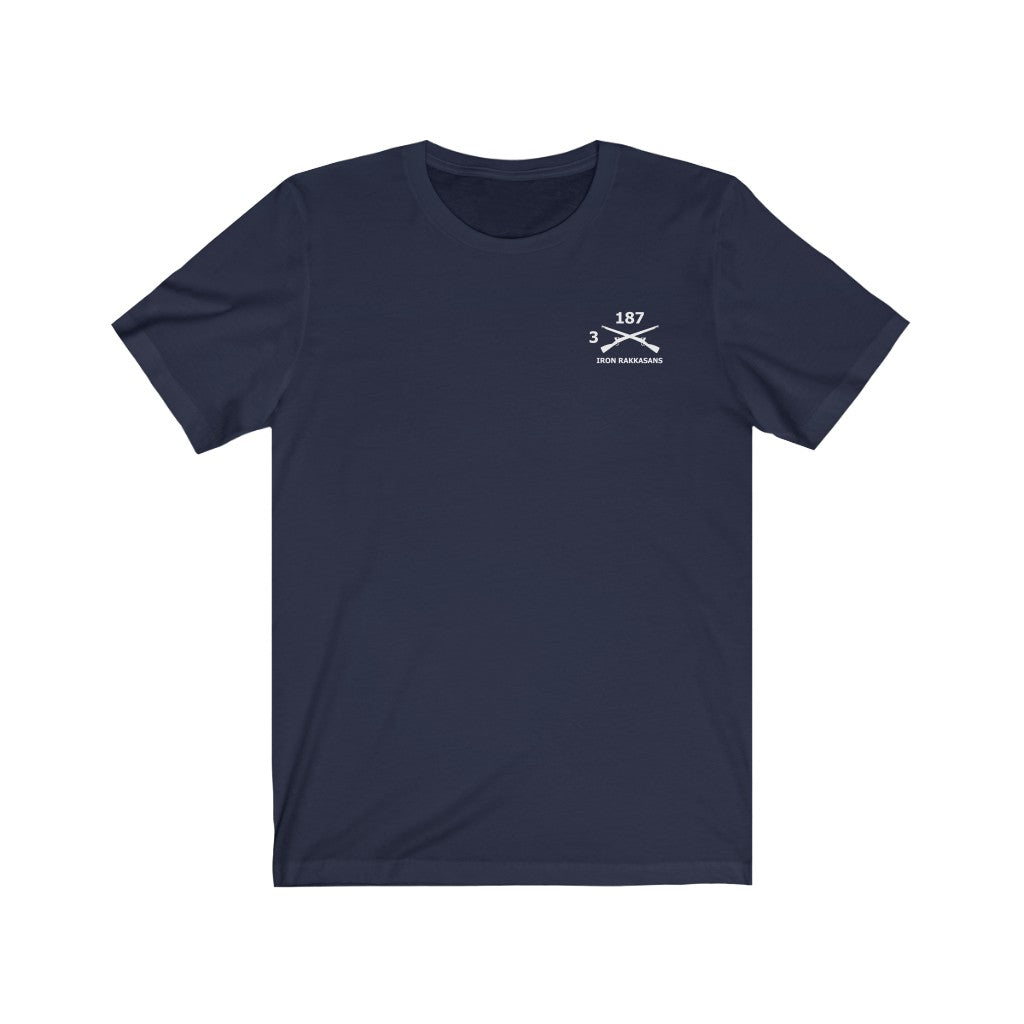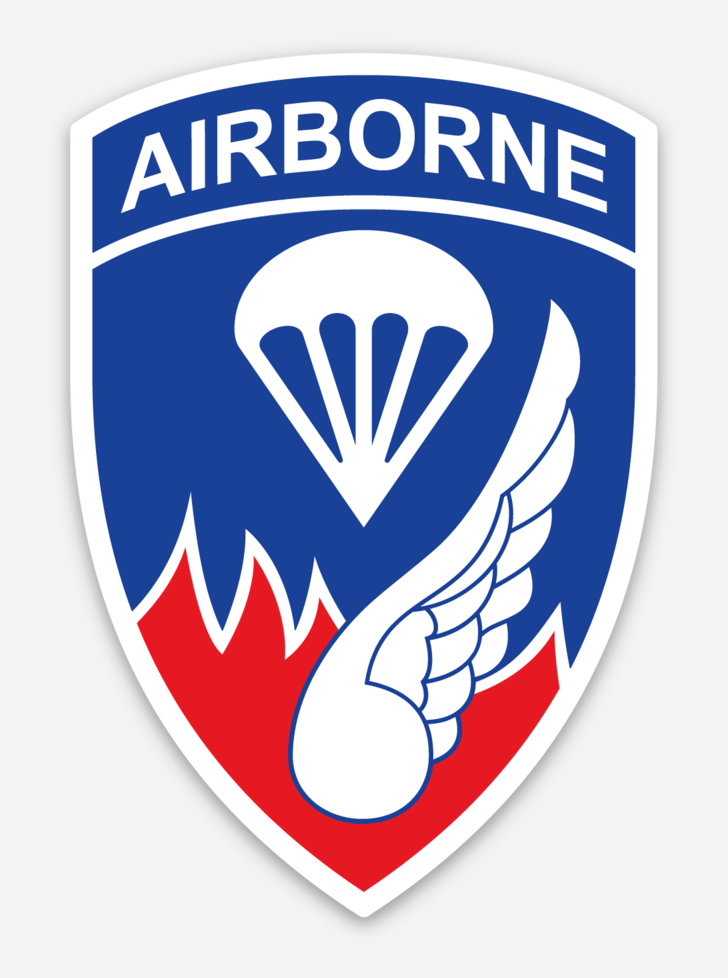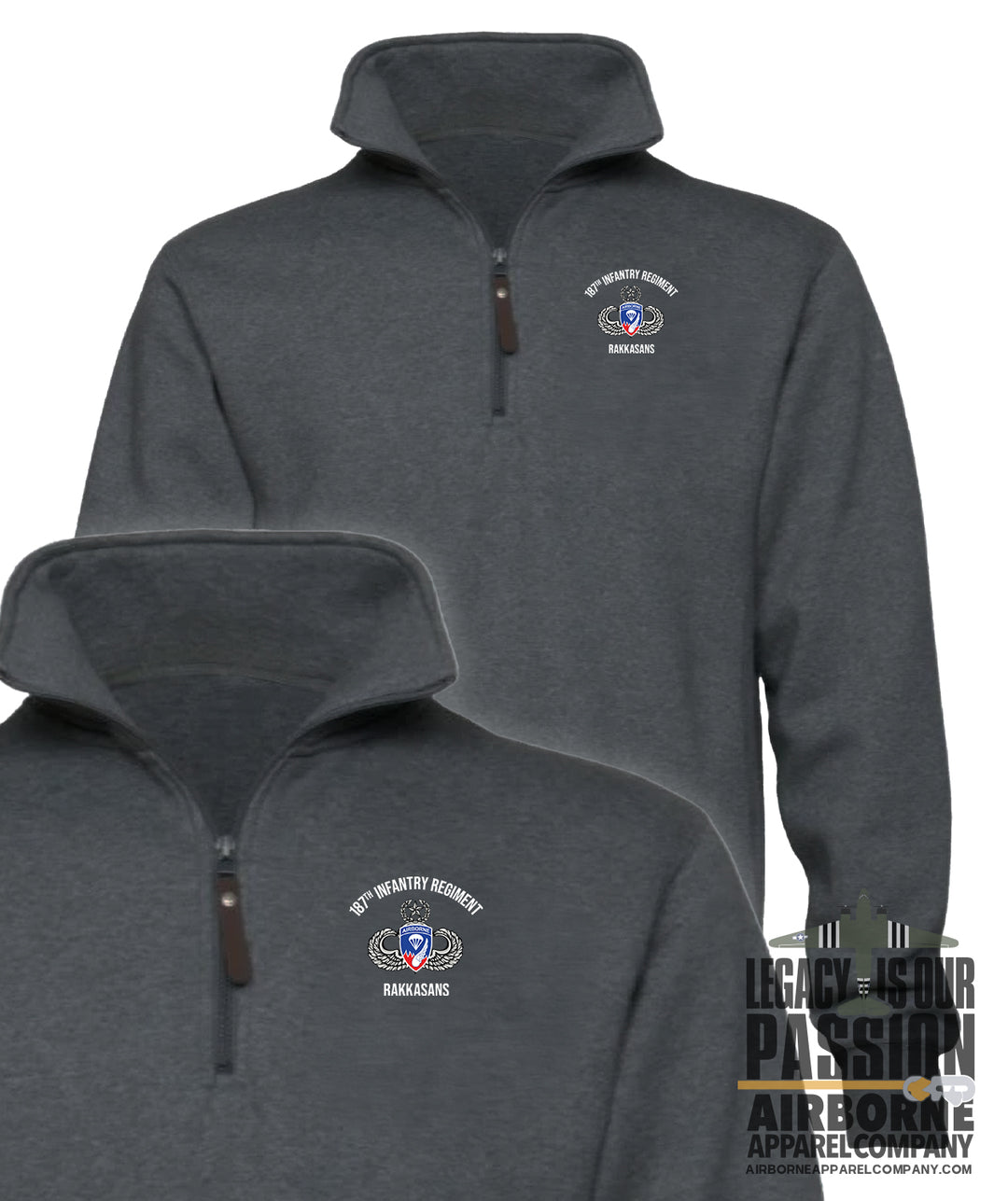The 187th Infantry Regiment, the legendary “Rakkasans,” is one of the Army’s most iconic airborne units. From World War II in the Pacific to two combat parachute assaults in Korea—Sukchon/Sunchon (1950) and Munsan-ni (1951)—and on through Vietnam, Desert Storm, Iraq, and Afghanistan, the Rakkasans have proven themselves in every era of modern war. Its battalions—1st Battalion “Leader Rakkasans,” 2nd Battalion “Raider Rakkasans,” and 3rd Battalion “Iron Rakkasans”—carry forward this legacy today within the 101st Airborne Division (Air Assault). Airborne Apparel Company is proud to offer reproductions and unique designs that celebrate the legacy of the 187th Infantry Regiment.
The 187th Infantry Regiment was first activated in 1942 as part of the 11th Airborne Division. It fought in the Pacific campaigns on Leyte and Luzon, clearing Japanese defenses in some of the war’s toughest terrain. After the surrender of Japan, the regiment became part of the occupation force. During this period in Japan, locals referred to the paratroopers as “Rakkasans”—Japanese for “falling umbrella”—a name that has become one of the most distinctive nicknames in the U.S. Army.
Korea – Legendary Combat Jumps
Reorganized as the 187th Airborne Regimental Combat Team (ARCT), the Rakkasans deployed to Korea in 1950. The unit made history with two combat parachute assaults:
-
Sukchon and Sunchon (20 October 1950): The Rakkasans jumped north of Pyongyang to cut retreating enemy forces and secure critical terrain.
-
Munsan-ni (23 March 1951): The regiment executed its second combat jump into contested territory to reinforce UN forces and disrupt enemy positions.
These were the only U.S. Army combat jumps of the Korean War, solidifying the Rakkasans’ airborne reputation.
Vietnam War
Later assigned to the 101st Airborne Division, the 187th deployed to Vietnam, where it fought in major operations including Carentan II, tough battles in the A Shau Valley, and the infamous assault on Hill 937 (Hamburger Hill). Rakkasan battalions distinguished themselves through relentless combat in harsh environments, earning multiple unit awards for valor.
Post-Vietnam and Modern Deployments
The regiment transitioned into an air assault role as the 101st evolved from parachute to helicopter-borne infantry. The Rakkasans deployed during Operation Desert Storm in 1991, and later rotated repeatedly into Iraq and Afghanistan during the Global War on Terror. Their missions ranged from large-scale assaults to counterinsurgency operations and security partnerships.
Battalion Nicknames and Identities
Each of the regiment’s battalions carries its own proud identity:
-
1st Battalion – “Leader Rakkasans”
-
2nd Battalion – “Raider Rakkasans”
-
3rd Battalion – “Iron Rakkasans”
Together, they represent the combined strength, leadership, and toughness that define the Rakkasan legacy.
Identity and Honors
-
Motto: Ne Desit Virtus (“Let Valor Not Fail”).
-
Campaigns: WWII (Leyte, Luzon), Korea (Sukchon/Sunchon, Munsan-ni), Vietnam, Desert Storm, Iraq, Afghanistan.
-
Decorations: Multiple Presidential Unit Citations, Valorous Unit Awards, Meritorious Unit Commendations, and foreign honors including the Republic of Korea Presidential Unit Citation.
Enduring Legacy
From jungle campaigns in the Philippines, to combat jumps in Korea, to Vietnam’s valleys and modern battlefields in the Middle East, the **187th Infantry Regiment—Leader, Raider, and Iron Rakkasans—**remains one of the most storied units in American military history. Its combat jumps, valor in battle, and airborne-to-air assault evolution continue to define the regiment as a symbol of courage and adaptability.
Airborne Apparel Company is proud to offer reproductions and unique designs that celebrate the legacy of the 187th Infantry Regiment.




